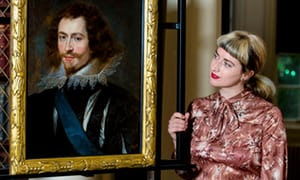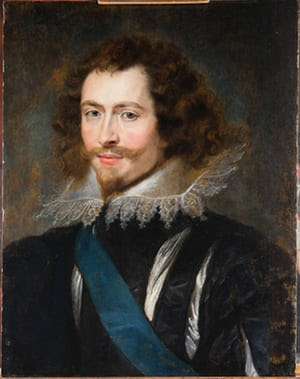The portrait is a study for a larger painting. “It’s just a sketch, but in the 18th and 19th century, unfinished work wasn’t as appreciated as it is today, so you get a lot of pictures which are finished off by later artists. So this was tidied up by someone and as a result, it began to look very stiff and more like a copy,” he said.
The final painting was destroyed in a fire in 1949, so it is very fortunate to have found this version, Grosvenor said.
Although the Duke of Buckingham’s personal relationship with James VI and I is much debated, the king referred to Buckingham as his husband, and their relationship scandalised the court. In 1628, the duke was assassinated at the age of 35, three years after James died.
It was known that Rubens had painted a portrait of Buckingham in about 1625, but the work had been regarded as lost by art historians for almost 400 years.
Grosvenor said: “The chance to discover a portrait of such a pivotal figure in British history by one of the greatest artists who ever lived has been thrillingly exciting.
“I hope it inspires many people to visit Glasgow’s museums, some of the finest in the country. ”
The rediscovered Rubens painting will go on display at Glasgow Museums’ flagship gallery, Kelvingrove, on Thursday, after the BBC4 programme has aired.
David McDonald, the chair of Glasgow Life, which runs the museums service, said: “Unsurprisingly, we are beyond delighted to discover the painting is by Rubens, an artist renowned globally as one of the most important painters in history.”
McDonald said Glasgow was proud of its extensive art collection and it had been a joy to work with the TV programme.
“We are excited to give as many people as possible the opportunity to see Rubens’s masterpiece in person,” he said. “George Villiers is sure to become one of the undoubted highlights of any visit to Kelvingrove.”
Karen Cornfield, the property manager for Pollok House, said it was exciting news for Glasgow. “We hope the programme will encourage visitors to come to Pollok, explore the collection and learn more about the family who brought so many great artworks to Glasgow,” she said.


